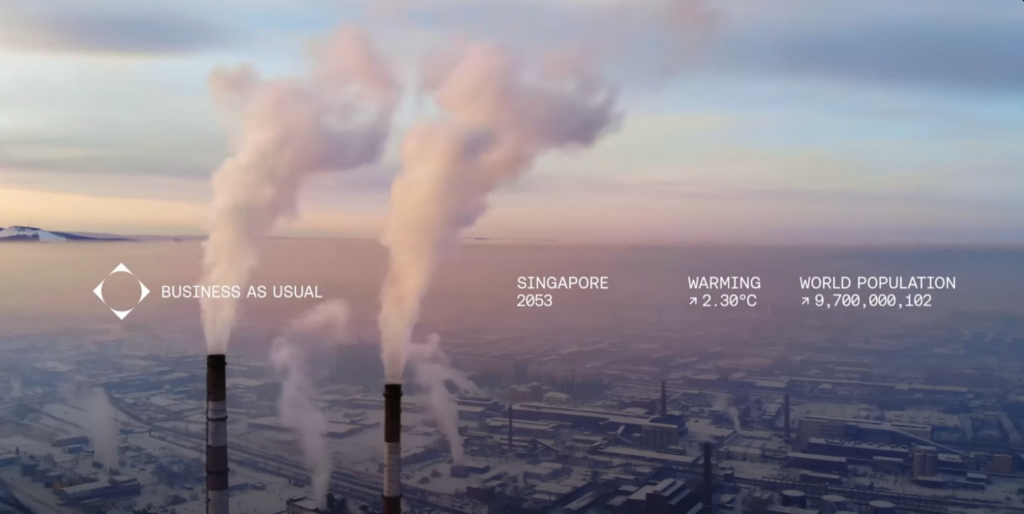Mission Miami: EY’s Four Futures

A few weeks ago, I was fortunate enough to join my mum on her incredible work trip to Miami. She works for a worldwide company that is one of the ‘Big 4’ accountancy firms, called ‘Ernst and Young’ (she is also currently in Japan for another trip- I am extremely envious). Amongst the glitz and glamour of the gala, my University of Miami tour and the dazzling city sights, the event itself engaged us in eye-opening talks that shape the sustainable business world of tomorrow, with the help of reflective AI people. Let’s dive in:
A brief summary- The EY Four Futures immersive experience is a science based, interactive journey facilitated by climate experts. It uses powerful storytelling and AI technology to explore four potential future scenarios based on our current climate actions. The goal is to inspire participants to think boldly about sustainability and their role in creating a better future for humanity and the planet.
Business as Usual- The “Business as Usual” scenario in EY’s Four Futures envisions a future where current trends and practices continue without drastic changes (this is what will happen if we continue living the way we are now). This path is assuming that technological advancements and market-driven solutions will address sustainability challenges, leading to a “Green Growth” dream. However, it also highlights the risks of maintaining certain aspects of life in order for our planet to remain completely stable, such as environmental degradation, resource depletion, and social inequalities. Whilst not being worst case scenario, it is frightening that solely continuing our way of life is leading to a damaging and severely disrupted future.

The “Collapse” worst case scenario presents a devastating future where consistent unsustainable practices lead to significant environmental, social, and economic crises. This scenario highlights the horrific consequences of continued abuse of natural resources, resulting in severe biodiversity loss, extreme weather events due to climate change, and widespread pollution. Economically wise, it portrays instability with businesses struggling to adapt. Meanwhile socially, it predicts increased inequality, conflicts, and public health emergencies. It serves as a brutal warning of the urgent need for sustainable practices to avoid such catastrophic outcomes. This was the screen I was drawn to first within the room, conscious of the fact that I was the youngest person in the room and that eerily I could have been staring at my future that was being labelled as terror and total destruction. This could very much be the reality for us.

The “Constraint” scenario conveys a future where national governments impose heavy restrictions to address sustainability challenges. These measures might include strict regulations on resource usage, carbon emissions, and economic activities to diminish as environmental impact as possible. While these restrictions aim to promote sustainability, they could also lead to economic slowdowns and social tensions as industries and communities adjust to the new limitations. A.K.A the dystopian films that we watch just may be what we are heading towards. As beneficial as this suggests to be at the time and the fact that it isn’t as devastating as “Collapse” or “Business As Usual”, it still provokes a concern and possesses a much more drastic ethical and sociological risk.

The “Transform” best case scenario demonstrates a future where bold and radical actions are taken by us to address sustainability challenges. This scenario assumes that governments, businesses, and individuals collaborate to implement transformative changes, leading to innovative solutions and sustainable practices. The focus is on creating a circular economy, renewable energy adoption, and balanced resource distribution, resulting in a more resilient and environmentally friendly world. It may come as a shock to you to discover that this is in fact the cheapest option out of all, it certainly was a moment of realisation for me. The fact that the brightest outcome of our world is the most affordable and crucial to us is outstanding. It demands the question: how are we even letting the other scenarios become an option?

Pictured above: Each scenario had AI individuals ‘calling’ us and warning us of their reality which ultimately could be what we will face nearing 2050
After this experience, I found myself asking questions like ‘How does EY sustainably pioneer their AI climb following their $1.4 billion investment late last year, whilst keeping these four futures in mind? And, considering I am the youngest person in the room, will others be just as motivated for change even if it won’t affect them as much?
The atmosphere of this entire experience was without a doubt incredibly moving, with tears being shed and deafening silence afterwards. I hope that this experience can be shared with the rest of the world as it is truly a spine-chilling masterpiece that serves as a ‘wake up call’ and I believe that this can provoke an urgently needed positive impact that will navigate the world in the right direction.
So…
















Post Comment
You must be logged in to post a comment.